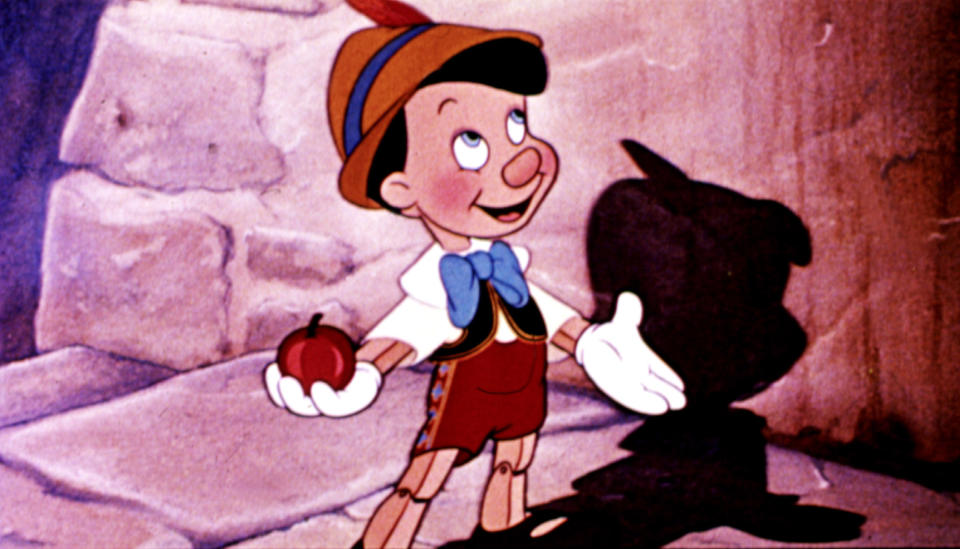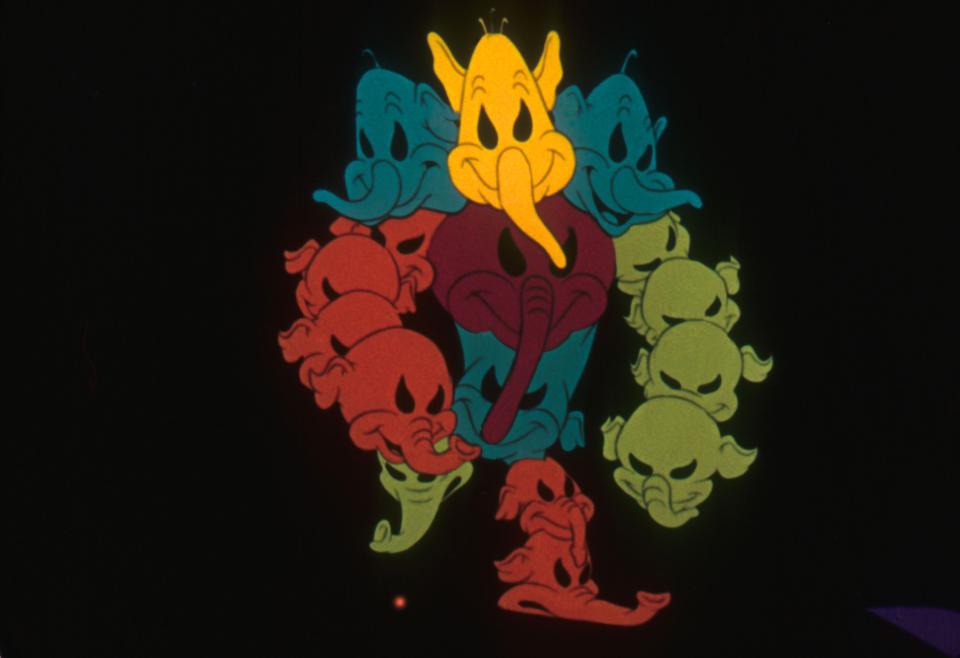Disney goes dark: The Mouse House's 8 scariest movie moments — and why they might be good for you

Walt Disney cartoons provide the basis for many moviegoers’ earliest cinematic memories, whether it’s seeing contemporary favorites like The Lion King or Frozen in theaters or classics like Bambi or Cinderella at home. At the same time, these seemingly family-friendly features are also the source of some of our darkest childhood fears. Even as young viewers delight in the comedy and music-filled adventures of Dumbo, Pinocchio and Simba, these movies also introduce frightening concepts like the death of a parent or vivid nightmares of pink elephants parading through your mind. (Watch our video above.)
Because it’s only natural for parents to want to protect their kids from scary things, adults who grew up on these scary Disney moments might hesitate about exposing their own offspring to the same movies. But there’s evidence that being terrified by these dark Disney moments is actually good for children. Sociologist and author of Scream: Chilling Adventures in the Science of Fear Margee Kerr tells Yahoo Entertainment that films like Dumbo and The Lion King provide a valuable way for families to process their fears together.
“Introducing really difficult ideas and concepts like death and good versus evil through film can be a really good way for kids to understand that and really grapple with it,” she explains. “Our research really has shown that choosing to do scary things can be a good way to learn about yourself and to challenge fears and build a sense of resilience. When it comes to kids, it’s really the parents having to know where their kid is in terms of development to know if they’re ready for that kind of material. It’s a good way to introduce scary topics.”
And with Disney remaking many of its animated favorites as live-action blockbusters, some of these scares are returning to the big screen in new ways. In Tim Burton’s update of Dumbo, for example, those notorious pink elephants do make a re-appearance, albeit in a far less hallucinatory context. And Jon Favreau’s upcoming remake of The Lion King will give James Earl Jones the chance to reprise Mufasa’s memorable death scene from the 1994 original. On the other hand, some of these recent remakes have been notably less fear-inducing than their animated counterparts, a hint that Disney is perhaps actively trying to avoid upsetting kids or their parents nowadays.
Kerr, for one, thinks that there’s still room for Disney to explore its scary side. “It’s not like you can protect kids from everything,” she notes, adding that Maleficent’s transformation into a dragon in 1959’s Sleeping Beauty is one of her personal scary Disney moments. “They’re going to in childhood realize that death is a thing and that there are these scary struggles. I get why [Disney] may not lean into that, but it is an opportunity to introduce pretty scary stuff in a fun way.”
In the name of scary fun, we’ve gone through the Disney vault and picked out the eight scariest moments in Mouse House history in chronological order. Read along … if you dare.
Pinocchio (1940)

En route to becoming a real boy, Geppetto’s stringless puppet child makes a brief, but horrifying detour into the animal kingdom when he makes a pit stop on Pleasure Island. At first, Pinocchio and his pals delight in the adult delights in this wonderland, including drinking, smoking and gambling. But their peals of laughter become bleats of terror when the island’s curse kicks in, transforming them from humans into donkeys that are destined for a life of backbreaking labor. I’ll be honest: this scene freaked me out so much as a kid that I’ve never been able to watch Pinocchio again to this day.
Fantasia (1940)

Think Fantasia is all walking broomsticks and dancing hippos? Think again: the final segment of the symphonic anthology film is a nightmarish visualization of Modest Mussorgsky’s 19th century composition Night on Bald Mountain. On the eve of the Witches’ Sabbath, a mountaintop demon unfurls his massive wings and casts a spell over the small village below that raises the dead and brings all kinds of demons out to play. Even Walt Disney — for whom Fantasia was a passion project — knew he couldn’t end the film on such a dark note; the following dawn brings a serene version of Ave Maria that chases away the night terrors.
Dumbo (1941)

If you want to expose your child to the dangers of drinking, just cue up this infamous scene from Dumbo. After accidentally imbibing too much champagne, a woozy Dumbo sees pachyderms of all shapes, sizes and colors marching through his mind. Besides scaring children away from alcohol, Kerr says that scenes like this have other beneficial qualities. “For kids, they’re still trying to sort out what is even reality; kids often have magical thinking — they start thinking that what they think will actually make things happen in the world,” she says. “The magical, kind of hallucinatory images can really be good for motivating creative thinking and imagination, but it’s important the parent is there to bring them back down and be like, ‘We can imagine these fantastic things, but it doesn’t mean they’re going to happen in real life.'”
Bambi (1942)

It’s the most notorious moment in Disney history: Bambi’s beloved mom is brought down by a hunter’s bullet. The scene is made even more impactful by the lack of any blood or even a dead body. Instead, it’s the mother’s sudden absence that’s so frightening; in the blink of an eye, Bambi is left alone. For many children, Bambi is an early illustration of how death is a part of life. But it remains sad, and a little bit scary, at any age.
Alice in Wonderland (1951)

While the Disney version of Lewis Carroll’s signature world is less surreal than what’s described on the page, there are plenty of unsettling sights to be found. The Cheshire Cat and his pearly white grin, for one. Also the whole “off with her head” thing. But few are as shocking as the movie’s interpretation of the Carroll poem “The Walrus and the Carpenter,” in which a jovial walrus and his goofy carpenter pal lead a group of adorable oyster children to their sudden demise. The fear on the oyster kids’ faces when they realize that they are on the menu will put you off seafood for life.
The Many Adventures of Winnie the Pooh (1977)

If pink elephants don’t scare you, Winnie the Pooh’s disturbing menagerie of Heffalumps and Woozles sure will. Late one rainy night, everyone’s favorite stuffed-with-fluff bear falls into an uneasy slumber and is visited by visions of these mythical creatures. Just listen for the way the cheery music turns chillingly discordant as Pooh’s nightmare goes on and on and on. That’s it — no more honey after midnight.
The Lion King (1994)

As previously mentioned, poor Bambi never sees his mother again after her death. But another Disney animal prince, Simba, does view the prone body of his royal parent. After Mufasa plunges to his death (with Scar’s help), Simba curls up next to the beloved father. So is seeing a dead body scarier for kids than not seeing a dead boy? Kerr says that the answer depends on their age. “For a young child, not seeing the actual death scene might be better, because it doesn’t bring into focus ideas about brutality. Just the idea of someone not being out of here anymore is different than here is a person or an animal that I’m seeing die. But both can serve as opportunities to have conversations with you kids about what it all means.”
The Hunchback of Notre Dame (1996)

It’s Disney tradition for every villain to get his or her own song, but few are as dastardly as “Hellfire” — Hunchback bad guy Judge Frollo’s big number. The lyrics of the song are disturbing enough: a supposedly righteous man confessing to lustful thoughts. But the imagery is what tips it into horror, as a gallery of faceless figures wearing blood red hoods look on, judging Frollo as a sinner ripe for a one-way trip to hell.
Dumbo opens in theaters on March 29. The Lion King opens in theaters on July 19. Visit Fandango for ticket information.
Read more from Yahoo Entertainment
Want daily pop culture news delivered to your inbox? Sign up here for Yahoo Entertainment & Lifestyle’s newsletter.
